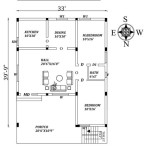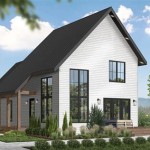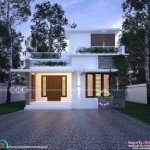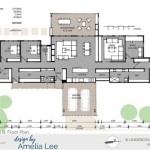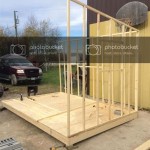Essential Aspects of Passive Solar House Plan
Passive solar design takes advantage of the sun's energy to heat and cool your home naturally, reducing your reliance on conventional heating and cooling systems. By carefully considering the orientation, size, and placement of windows, walls, and other building elements, you can create a comfortable and energy-efficient home.
Site Orientation
The first step in designing a passive solar house is to determine the best orientation for your home on the site. In the Northern Hemisphere, south-facing windows allow the most sunlight to enter your home during the winter, when the sun is lower in the sky. In the Southern Hemisphere, north-facing windows are recommended.
Window Placement and Size
The size and placement of windows play a crucial role in passive solar design. Large, south-facing windows allow more sunlight to enter your home during the winter, while smaller, north-facing windows help to reduce heat loss during the summer. Overhangs and awnings can be used to shade windows from the sun during the summer, while still allowing sunlight to enter during the winter.
Thermal Mass
Thermal mass is the ability of a material to absorb and store heat. Materials with high thermal mass, such as concrete, stone, and brick, can help to regulate the temperature of your home by absorbing heat during the day and releasing it at night. This helps to keep your home warm in the winter and cool in the summer.
Insulation and Air Sealing
Insulation and air sealing are essential for any energy-efficient home, but they are especially important in passive solar homes. Insulation helps to reduce heat loss in the winter, while air sealing prevents drafts and helps to maintain a comfortable indoor temperature. By carefully insulating and air sealing your home, you can make it more comfortable and energy-efficient.
Natural Ventilation
Natural ventilation can help to keep your home cool in the summer. By opening windows on opposite sides of your home, you can create a cross-breeze that will circulate air and help to cool your home. Natural ventilation is most effective when the outside temperature is cooler than the inside temperature.
Landscaping
Landscaping can also be used to improve the energy efficiency of your passive solar home. Trees and shrubs can be planted to shade windows from the sun during the summer, while deciduous trees can be planted to allow sunlight to enter during the winter. By carefully considering the landscaping around your home, you can create a more comfortable and energy-efficient living space.
Passive solar design is a cost-effective and environmentally friendly way to make your home more comfortable and energy-efficient. By following the principles outlined above, you can create a home that is warm in the winter, cool in the summer, and uses less energy year-round.

Passive Solar Home In Stoneville Western Coveney Browne Architects

Passive Solar House Plans Version 3 Byexample Com

Great Floor Plan For Solar Passive Home In Google Search House Plans Narrow

4 Bedroom With Passive Solar Design 16506ar Architectural Designs House Plans

Solar Adobe House Plan 1870

The 4 Must Have Features To A Solar Passive House Design Greenmark Homes Green Home Builders Dubbo

Ranch House Plans For A Passive Solar 1 Bedroom Home

2 Combined Active And Passive Solar House Design Source Own Elaboration Scientific Diagram
What Does A Passive House Cost To Build Leanhaus

Passive Design Green Home Technology Center

